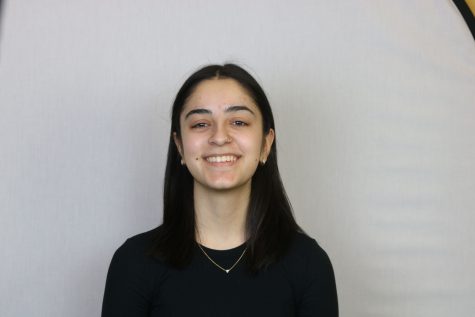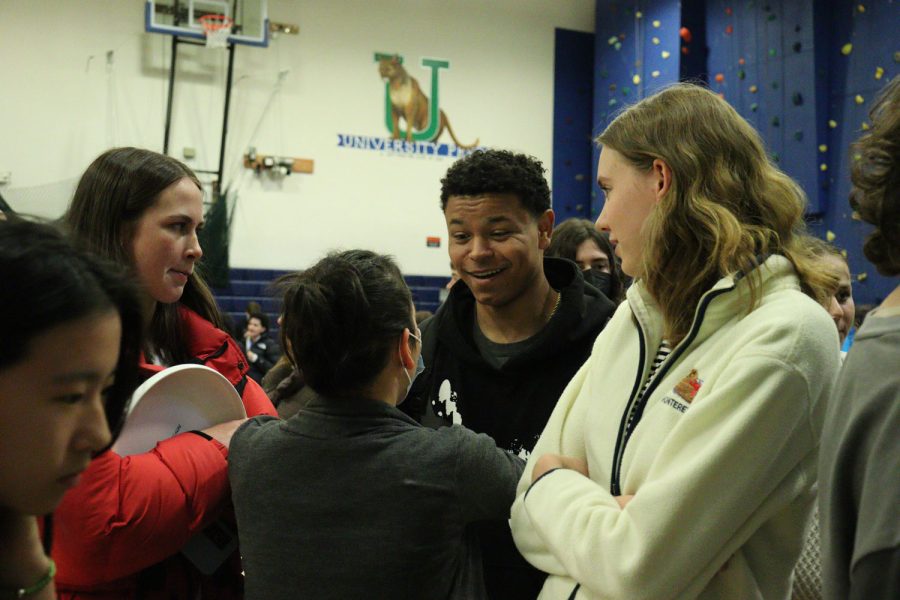Charting Courses
Behind-the-scenes on class registration
Photo: Mira
Junior Beruk Sims and sophomores Cate Fitzgerald and Sophia Spagnola discuss courses with their peers and teachers during the Electives Fair on April 18th.
One new civics option. A January outdoor leadership intensive. A computer science 4: advanced topics class. New science intensives like teaching science and microbiology. After spending a week reviewing these new choices and selecting alternates for their electives, University Prep ninth, 10th and 11th-grade students recently finalized their preferred classes for the following school year.
“It’s actually a really long process after you submit those forms because we do basically build the schedule by hand,” Assistant Head of Upper School Meg Anderson-Johnston said.
There are many factors that influence the structure of the yearly schedule.
“It really is a jigsaw puzzle that depends on who’s teaching what and what’s the most important thing,” Billingslea said.
Once submitted, advisers, parents, grade deans and college counselors spend hours reviewing the forms.
“It really is just everyone being accountable to make sure your student has what they need to not only fill graduation requirements but to be as successful as they want to be during the college application process,” Assistant Head of School for Academics Ed Billingslea said.
This year, University Prep is switching from the old database created by the previous Assistant Head of School for Academics, Richard Kassissieh, to using Veracross, an online database and directory used by UPrep.
“It was just too complicated to continue to maintain without him,” Anderson-Johnston said. “And Veracross is already a system that we use, so it just makes sense to have all that information integrated.”
The new system will make it easier for advisers to help students plan their schedules.
“Advisers are going to be able to see every course that their advisee has taken,” Anderson-Johnston said. “It’s really helpful for transfer students or students who studied away because everything will be in there.”
However, sophomore Sophie Harris did not enjoy the transition to the new system.
“There’s a lot of flaws with it, and I think the other one was better,” Harris said. “I can see how it’d be nicer for people to organize and get their classes through, but it’s really annoying to input all your classes [manually].”
Starting at the beginning of intensives, the master scheduling team begins pulling together the following year’s schedule.
“That includes placing every student in classes and figuring out where all the classes are going to meet,” Anderson-Johnston said. “Then, over the summer, the registrar does a lot of work on the back end to balance courses.”

Mira Hinkel is a staff member of the Puma Press, and this is her second year on staff. She enjoys writing news stories and covering student life. Her favorite...


